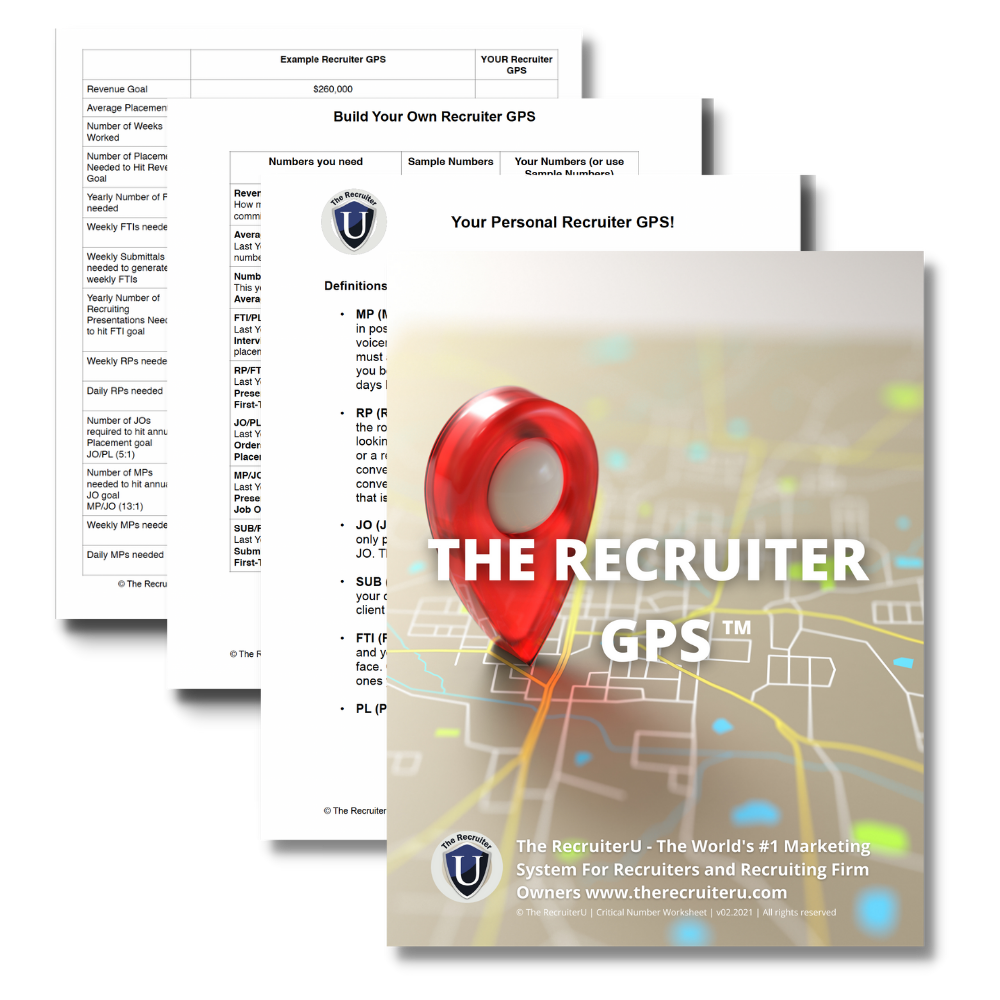QUESTION: What should I be doing NOW to ensure a great 2022? Matt – Longmeadow, MA
ANSWER: Whether you are a solo or a firm owner with a team, annual planning for 2022 based on your goals is essential.
Start by getting clear on what you want for yourself and your firm in 2022.
People do not plan or commit to a plan because of a lack of clarity on what they want. Recruiters will throw out a number like $300,000, $400,000, and $500,000, but no context or ‘why’ is tied to that goal. There is nothing wrong with a number itself, but generally, when I find somebody that wants to bill $300,000, after a year of billing $150,000, and I ask this question, “why is that number significant to you? What does that number allow you to do or to have that you do not have now?
If a recruiter said that they want to bill $300,000, and I ask how they would feel if they billed $225,000, they may admit it would be an excellent year at that billing level. The reason they give is that $225,000 is $75,000 more than they did the previous year, which is exciting to them. That excitement at $225,000 means they will not do what is necessary to break through to $300,000. If you are passionate about achieving the billing goal, any number below should bring forth some feelings of regret or remorse.
One thing is always clear. If you are going for a level that you have never hit before, you will encounter challenges you have never faced in the past. And my experience is, without a passionate reason to make it happen, you will settle for “good enough.”
The #1 litmus test I use when determining a revenue goal is always: Is there a passion for that number? If there is passion behind that goal, you will work through rejection, try out new techniques, get support, and push yourself to activity levels you may not have done so in the past because there is a beacon.
Clarify personal income to drive annual planning.
Once you settle in on and are committed to your revenue target, the next step is to run it through a free tax program, something like Turbo Tax. Figure out how much after expenses you are going to keep. This is a great way to gain even greater clarity on what that billing goal will yield in personal income.
For example, if you bill $300,000, you will have other expenses associated with your business, such as a LinkedIn subscription, internet, website, etc. You will also have to pay your state and federal taxes out of that revenue. What’s left is net money in your pocket. After all, the net will drive you because it will make the difference in your personal life (such as reducing credit card debt, building on a retirement account, new homes, cars, vacations, etc.)
Determine the metrics to qualify daily success.
Once you know your net income, there is a straightforward equation to determine the needed metrics to achieve it.
If you billed $150,000 and your average fee was $25,000, that means you made six placements. If you do not know your first-time interview to placement ratio, it is safe to use a baseline of 8 interviews to a placement. Using that number, I come up with about two interviews per week, at an average fee of $25,000, netting $300,000. With eight interviews a month, in theory, that results in one placement per month.
You will then want to determine other benchmarks to gain more clarity on your metric goals. These include the number of marketing conversations to get a job order and the number of candidate conversations you need to get the first interview. If your job order to placement ratio for contingency recruiting is 4 to 1, you will need one job order per week. My clients see 10 to 12 marketing conversations per job order, an additional two or three per day. You know that a successful day is when you have completed six recruiting conversations and two marketing conversations. If you do that every day, you will have had a successful week.
Want to go deeper? Determine the exact weekly targets you and your team members need to hit to meet or exceed your revenue goals in 2022. Click here to download The Recruiter GPS™ worksheet.

Identify what systems will support your annual revenue goals.
Now that you know what a successful day and week look like to meet your revenue goal, you can begin to decide what changes or systems need to be in place to support you. Determine gaps in information, knowledge, and execution. That could include an upgraded applicant tracking system, a better LinkedIn subscription, outsourced research, or content marketing. All these enhancements then get layered in as monthly and quarterly targets.
P.S. Whenever you’re ready… here are 4 ways I can help you grow your recruitment business:
1. Grab a free copy of my Retainer Blueprint
It’s the exact, step-by-step process of getting clients to give you money upfront. https://get.therecruiteru.com/lm
2. Join the Recruiter Think Tank and connect with firm owners who are scaling too It’s our Facebook community where smart recruiters learn to make more money and get more freedom. https://www.facebook.com/groups/there…
3. Join me at our next event
3x a year, I run a 3-day virtual intensive, sharing the 9 key areas that drive a 7-figure search firm. Click here to check out the dates of our upcoming event: https://get.therecruiteru.com/emerge
4. Work with me and my team privately
And if you ever want to get some 1:1 help, we can jump on the phone for a quick call, and brainstorm how to get you more leads, more placements, and more time. https://get.therecruiteru.com/scale-now

Recent Comments